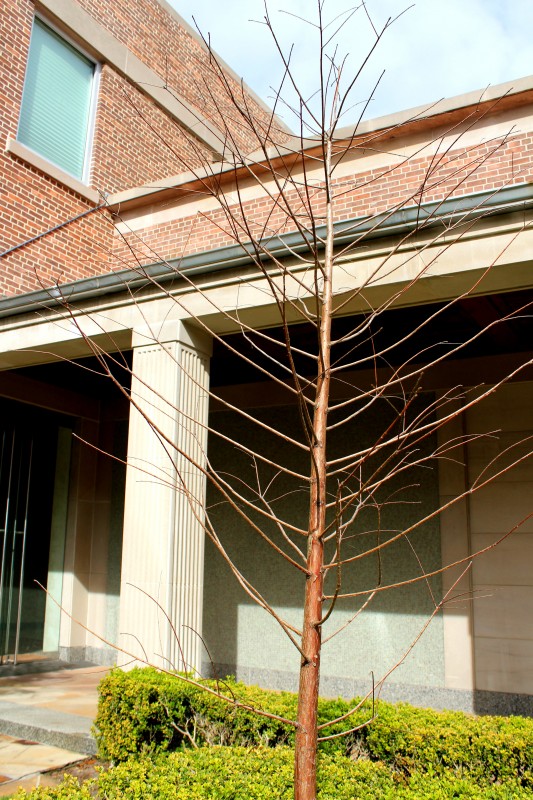Written by Jake Ingram
 Dovetailing with Jim Draper’s Feast of Flowers exhibit, The Museum is featuring a few groupings of North Florida Native Plants in various locations around the museum. Each week we will look at one of these plants in more detail.
Dovetailing with Jim Draper’s Feast of Flowers exhibit, The Museum is featuring a few groupings of North Florida Native Plants in various locations around the museum. Each week we will look at one of these plants in more detail.
At the four inner corners of the central boxwood hedge are placed four Bald Cypress trees familiar to us as denizens of our nearby fresh water swamps. They are deciduous, losing all their cinnamon-tinted leaves annually in early December and giving them the bare look you’ll see during the Draper exhibit. In their youth, they possess strongly horizontal branches from the ground up, eager to gather as much sunlight as possible. As such, they have a striking sculptural form in winter possessing a fish-bone silhouette look until their fern-like leaves appear in the early spring. As they grow taller, the lower branches, having done their work, disappear leaving the sun-gathering work to the upper tiers of branches. With age they develop flat-top canopies sixty feet high or more and utilize what are called ‘knees’ to help get the oxygen they need. Much of the largess of the Cummer family was derived from the lumbering of cypress trees. No artist can capture the essence of the Bald Cypress quite like Jim Draper. Just go see for yourself!
The Bald Cypress (Taxodium distichum) is a tree native to fresh water swamps and the edges of rivers. They are deciduous, losing all their cinnamon-tinted leaves annually in early December. In their youth, they develop strongly horizontal branches from the ground up, eager to gather as much sunlight as possible. As such, they have a striking sculptural form in winter, possessing a fish-bone silhouette look until the delicate, fern-like leaves appear in the early spring. As they grow taller, the lower branches, having completed their work, gradually disappear leaving the sun-gathering work to the upper tiers of branches. With age they develop flat-top canopies sixty feet high or more and on the ground around them utilize what are called ‘knees’ to help ingest the oxygen they need.


